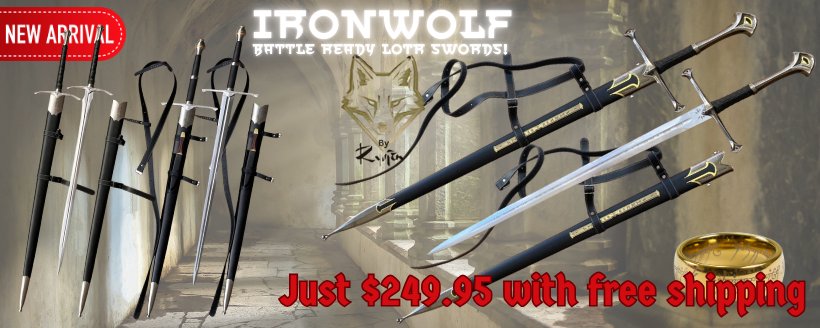Ryujin 13th Century Arming Sword Review
The Ryujin 13th Century Arming sword review came about soon after we released a couple of medieval arming swords brought to the market by our friends at Ryujin Swords.
Knowing they were good quality at a great price, we arranged to send one for a warts and all, no punches pulled review and evaluation from one of our Review team members so you can have some idea what to expect when you open the box.
So without any further ado, the Ryujin 13th Century Arming sword review:
Ryujin 13th Century Arming Sword Review
Review by SBG member Alexatarms
I’ve been lurking on the Sword Buyer’s Guide forums for years but this will be my first review. Full disclosure: SBG sent me this sword for the purpose of review. Hope you find the information useful!
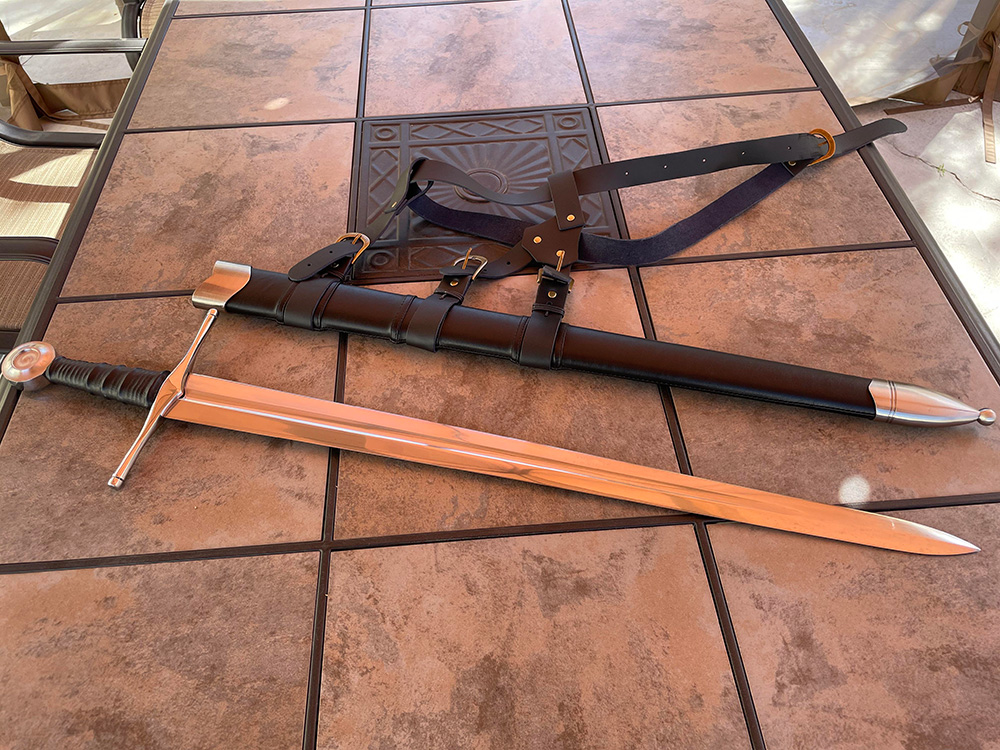
What it is
This is the 13th Century Knightly Arming Sword available in the Sword Buyer’s Guide Store. It’s made by Ryujin Swords, though I could find no Ryujin branding on the packaging or the sword itself. The blade, a single-hand arming sword of a Type XII design going by the Oakeshott typology, is forged from 65MN spring steel, a Chinese grade of high-carbon steel commonly used to make knives and leaf springs. The blade is hand sharpened and polished. The hilt is comprised of stainless steel fittings, a wood core grip wrapped in cord and faux leather, and a peened pommel. Here are the specs straight from the SBG Store page:
- Overall Length (with scabbard): 36"
- Overall Length (without scabbard): 34 3/4"
- Blade Length: 27 5/8"
- Handle Length: 6 1/4"
- Weight (without Scabbard): 2.6 lbs
- Point of Balance (from guard): 4 1/2"
Price: $249.99
Unboxing
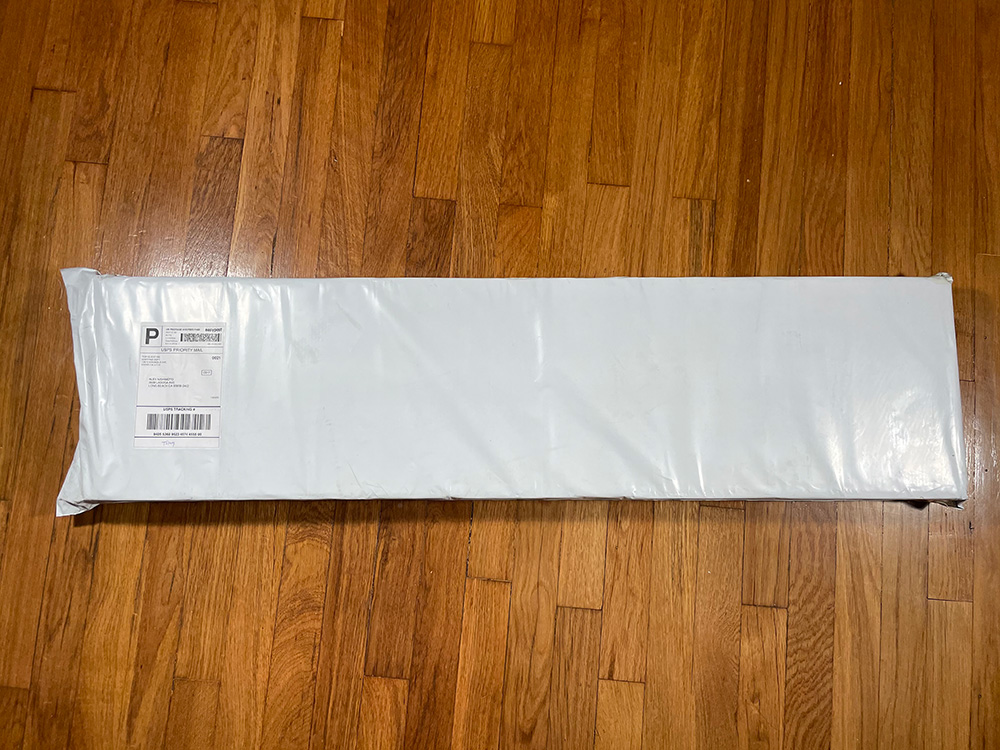
The sword arrived in a box that was slipped inside a thick,
tight-fitting poly bag. After I peeled the bag away I noticed that the
box was torn on one end. Luckily, the sword was undamaged despite the
pommel end breaking through the foam it was encased in and hitting the
cardboard. It’s my belief that the tension of the plastic bag held the
box together and prevented the pommel from completely busting through.
The bag did its job, but Ryujin should look into its packaging to
prevent break-throughs from happening in the first place.
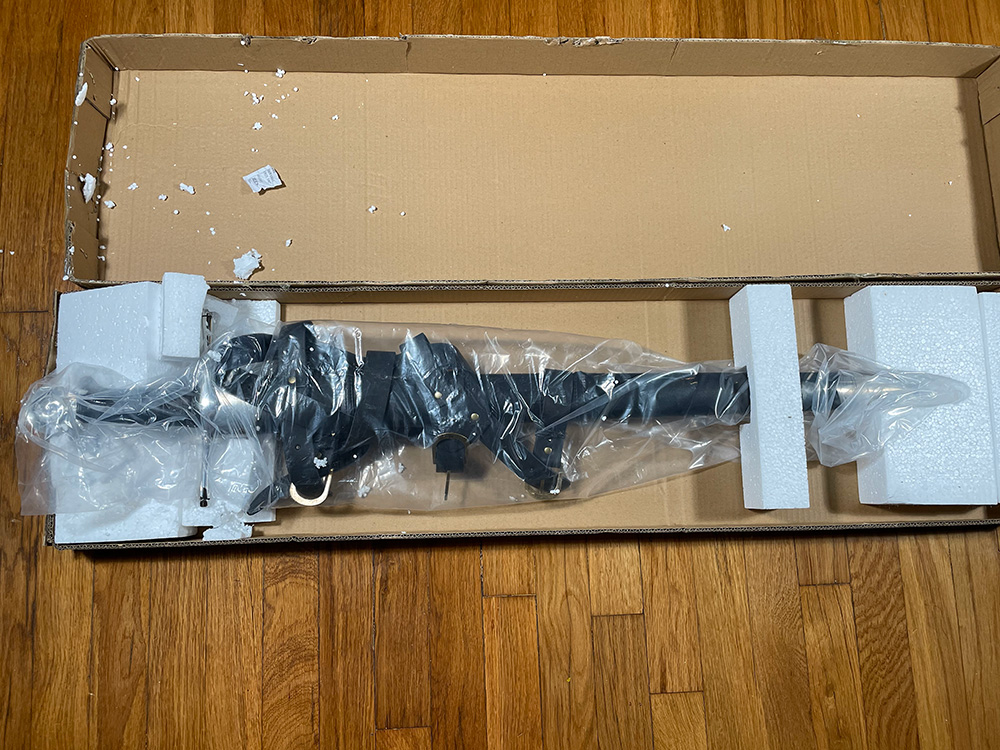
Once I got the sword unpacked, I was first struck by how sharp it was. The edge is paper-slicing sharp with no detectable secondary bevel. The blade is polished to a fine satin finish, but there were some flaws out of the box: a few small scratches near the edge and some swirl marks by the top of the fuller on one side.
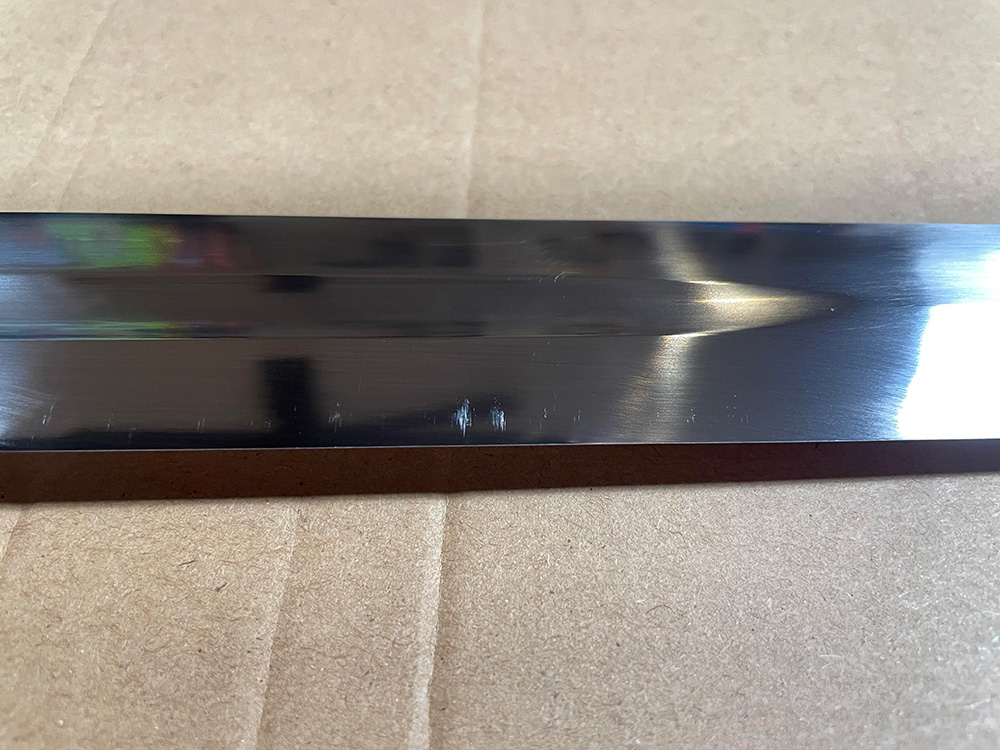 No secondary bevel, but a few cosmetic issues
No secondary bevel, but a few cosmetic issuesThough it felt slightly heavy, I was initially impressed with its balance and feel in the hand. The weight of the blade is noticeable with each swing but I could still change direction and transition to different guard positions relatively quickly and easily. If this were my only arming sword, I’d be perfectly happy with it. But because I have a few other arming swords in my collection I had some points for comparison.
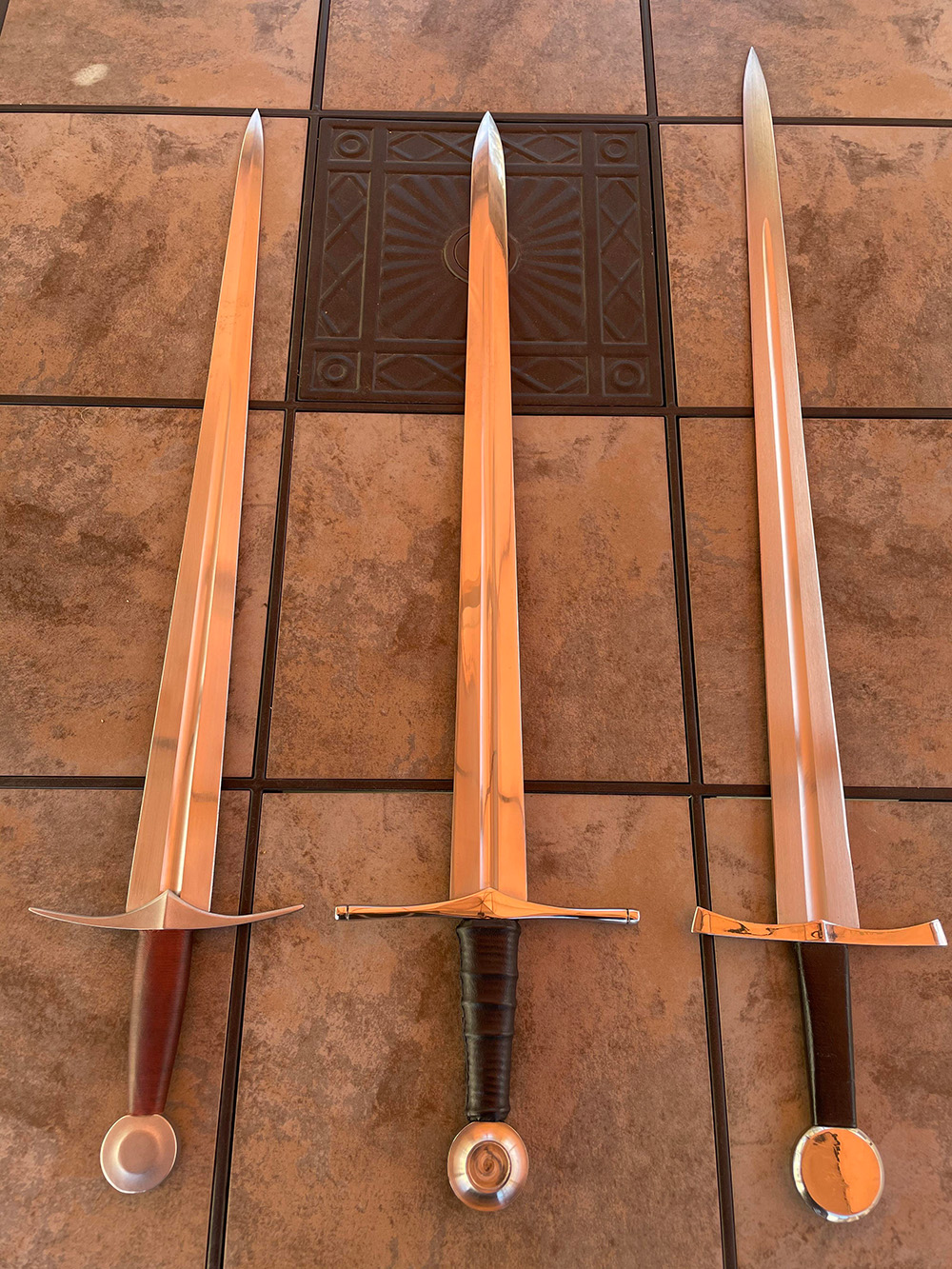 Comparison with some other Arming Swords (the Ryujin is in the middle)
Comparison with some other Arming Swords (the Ryujin is in the middle)Taking a Closer Look
Evaluating the Ryujin arming sword in a vacuum, it handles just
fine. But once I picked up my other swords (a Hanwei Tinker EMSHS,
Kingston Arms Atrim Type XIV, and Black Fencer Type XIV blunt training
sword), the Ryujin felt a bit slow and clunky in comparison. The weight
is dead on with the specs at 2 lbs, 9 oz, which isn’t too heavy for a
one-handed medieval sword. As it turns out, it weighs exactly the same
as the Black Fencer Type XIV I use for sparring. They’re also very close
in length, with the Black Fencer measuring 34.5 inches overall. The
point of balance is only a quarter of an inch farther from the guard on
the Ryujin, but the difference in how they felt in my hand was
surprising. The Type XIV flows smoothly from action to action, while
with the Ryujin I found myself fighting the weight more often. Again,
it’s not bad. There are other production arming swords that handle
better, though none at the Ryujin’s price point.
There’s not much distal taper to speak of, and honestly I don’t expect much in a sword under $250. My digital calipers indicated 6 mm thickness at the base of the blade, around 5 mm in the middle, and 4.4 mm at the end of the fuller. Interestingly, from there the blade thickens to 6 mm again before tapering to its point. The fuller is well done, with no visible signs of machining.
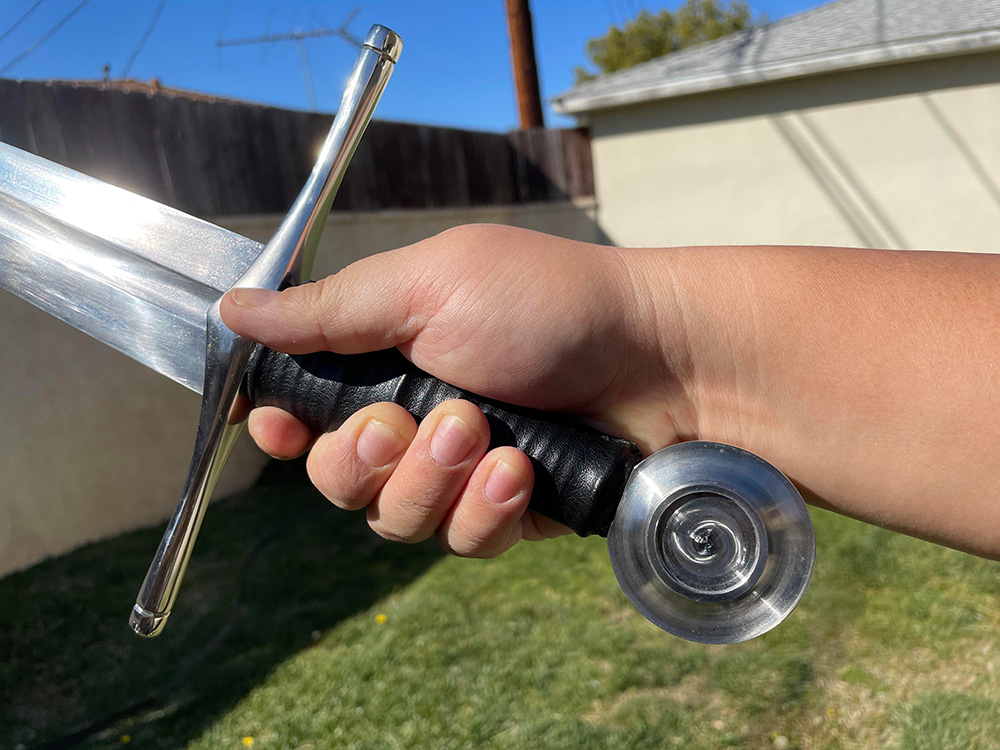
The Hilt
Here’s where I feel the Ryujin could use the most
improvement. Of all my arming swords, the grip on the Ryujin is by far
the thickest.
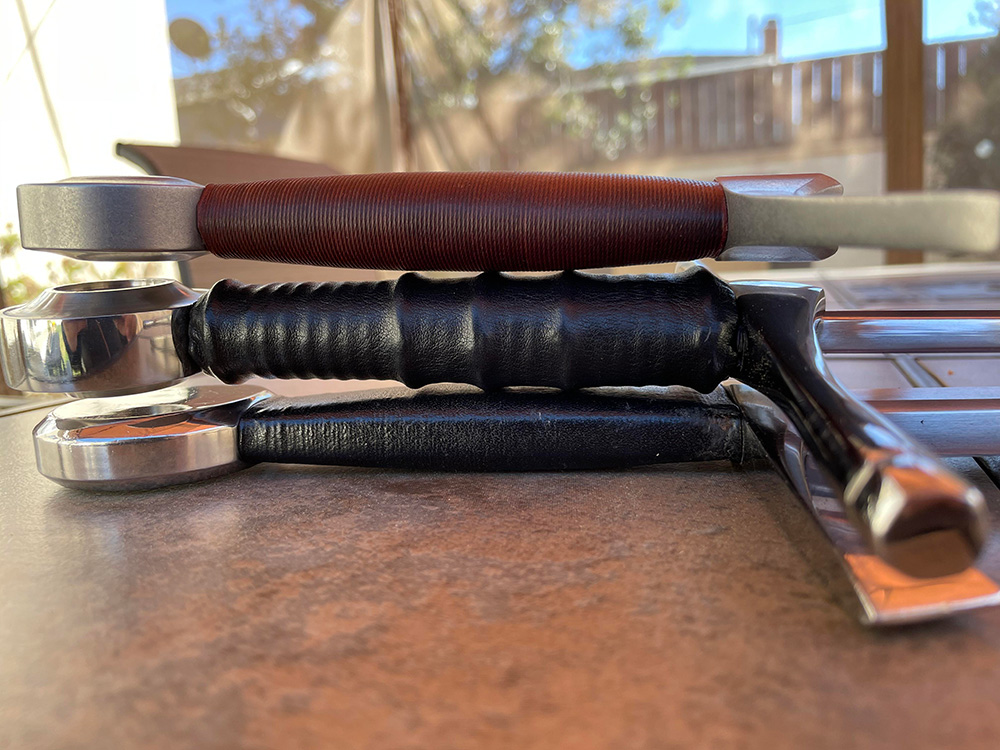 Comparing hilts, the Ryujin in the middle is the fattest
Comparing hilts, the Ryujin in the middle is the fattestThe risers look cool, but don’t fit my hand well when held in a handshake grip. Holding the sword with a hammer grip is comfortable enough, but the chunkiness of the handle makes transitioning from one grip to another more difficult. This was problematic for me when practicing as I’m used to squeezing my bottom two fingers to get more power out of a cut. You can do it with the Ryujin, but it’s not as fluid in the hand as other arming swords I own.
Another issue I ran into was the rough finishing of the pommel. The edges aren’t sharp but they could be more rounded. When cutting, the pommel would often scrape against the inside of my wrist. It’s fine if you’re just chopping a few water bottles at a time, but after a while it starts to get uncomfortable.
Cutting Tests
With such a fine edge from the factory, I expected the Ryujin to glide through most of the various recyclables I had saved up—and it didn’t disappoint. The heft that I grappled with when doing flow drills gives the blade considerable authority in a downward cut. Slicing milk cartons and water bottles took almost no effort at all. You can just guide the edge and let gravity do most of the work. The sword was able to cut through a single rolled tatami mat, though not as cleanly as my Tinker. What surprised me most was the Ryujin’s ability to cut through more substantial targets. I cut about 75% into a dry piece of bamboo before it snapped (the bamboo that is).
On a whim, I took a swing at a tree branch I had been meaning to trim anyway and cleaved into it more deeply than I expected.
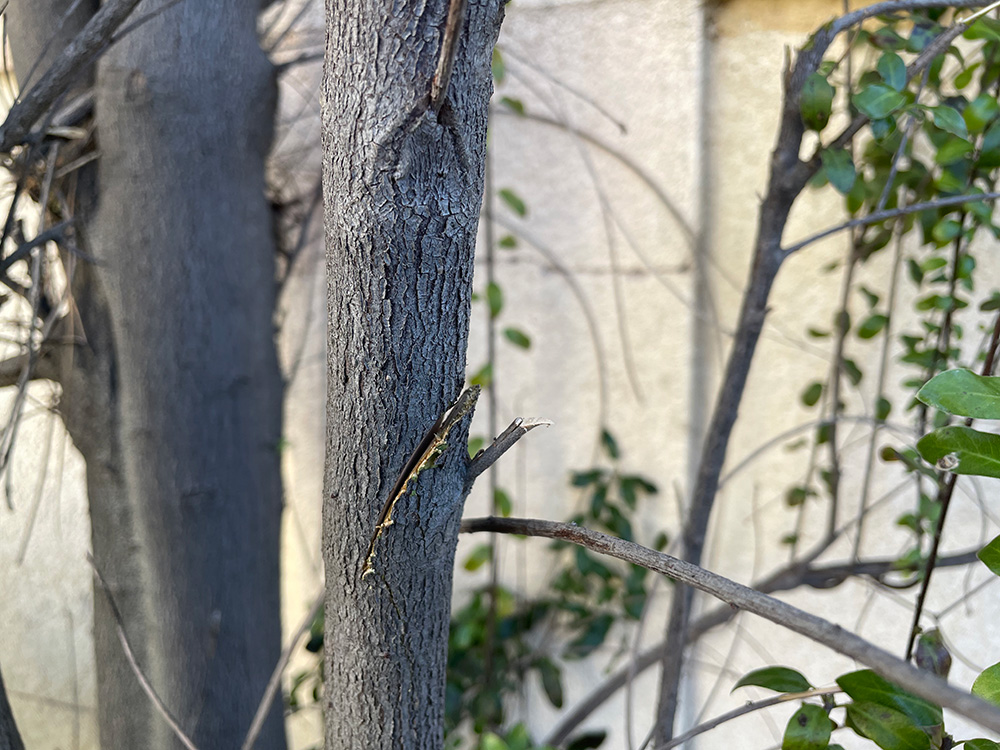
By the end of the tests, the edges were noticeably duller. I could still cut through paper but the edge would get hung up right around the center of percussion, sometimes tearing and other times continuing to cut after applying more pressure and drawing slowly. The sword was still plenty sharp for cutting bottles a couple days later. The guard is still nice and tight after several hours of cutting (including those couple whacks at a tree limb and accidentally hitting my stand).
The Scabbard
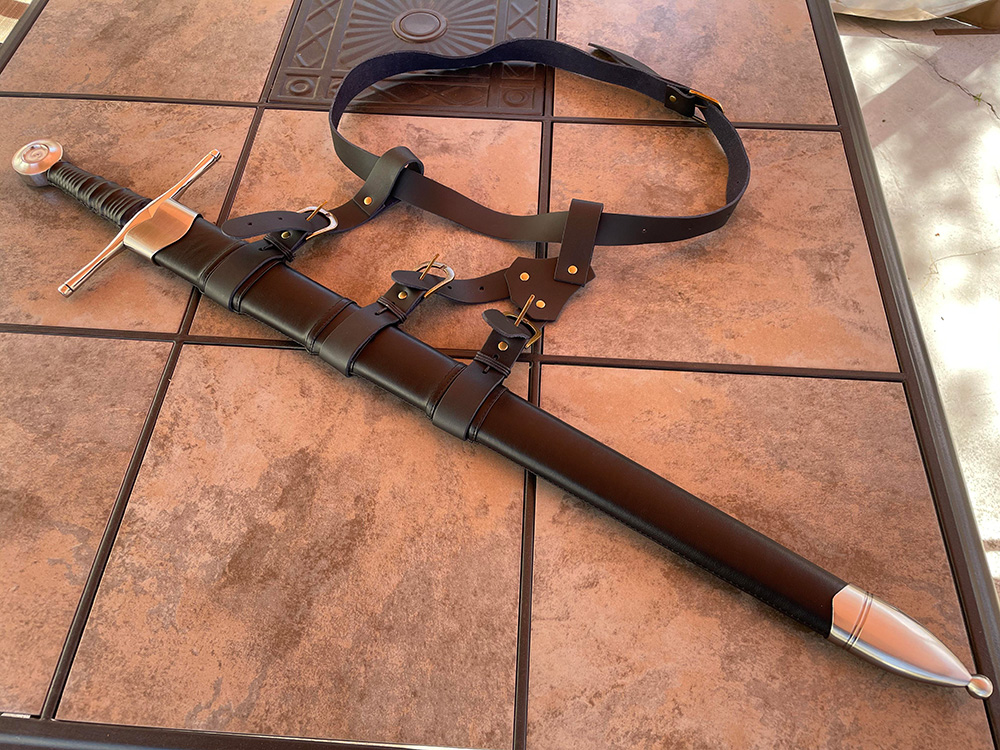
The wood core scabbard is well done. The faux leather wrap is soft to the touch yet durable. It seems fairly resistant to nicks and scratches, unlike my Tinker’s scabbard, which picks up scratches with a slip of a fingernail. The sword slides easily into and out of the scabbard, with just the right amount of pressure to draw it quickly while holding it securely in place when not in use. A small detail that I really appreciate is that you can sheath the sword both ways with no problem. No matter which edge you have facing out, the sword slides into the scabbard without binding and seats fully at the mouth. One minor complaint is that the throat is thicker than it needs to be. Shaving a few mm off that fitting would allow the guard to sit flush.
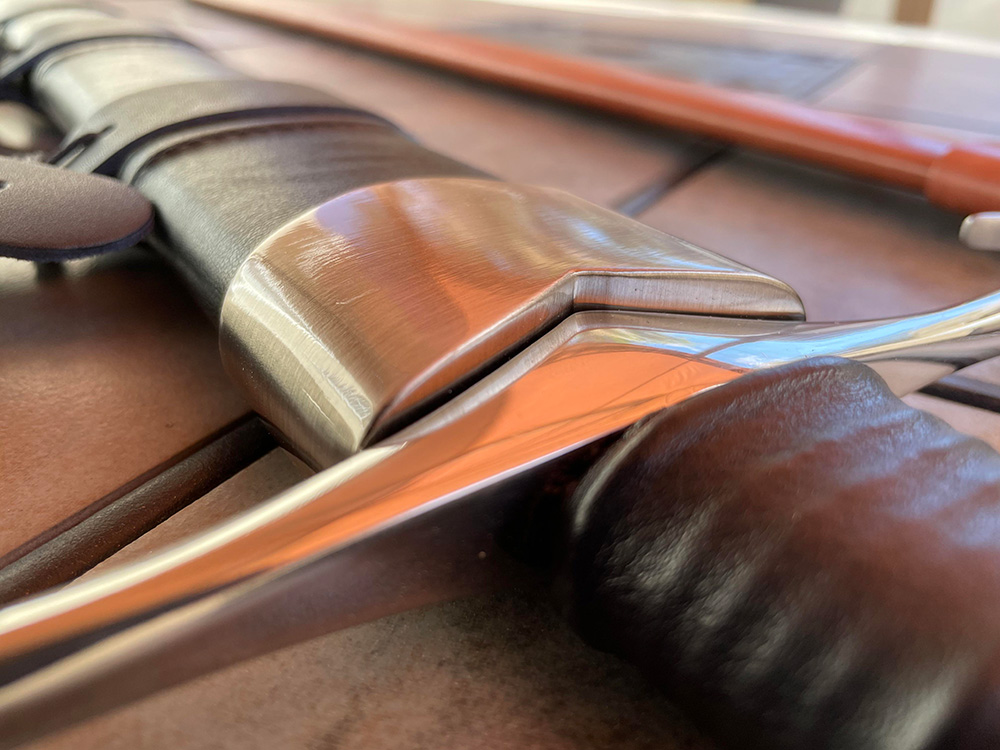
The belt, unfortunately, is basically useless. I fiddled with the
straps for almost an hour and could never get the sword to sit any more
upright than 90 degrees from my hip. The good news is that it’s free,
and when you take it off the scabbard the stitched ribs that hold the
belt loops on look pretty cool.
Verdict
For the backyard cutting enthusiast, medieval reenactor, or casual
collector, the Ryujin 13th century arming sword is an exceptional value.
You get a functional sword that looks the part of a one-handed medieval
sword and has 70-80% of the agility of its higher priced competitors.
If you’ve ever been curious about this style of sword but don’t want to
break the bank getting one, you won’t be disappointed with the Ryujin.
For the Historical European Martial Arts practitioner on a budget, I could recommend this as a first sharp sword to get started practicing your cutting. However, I’d advise eventually stepping up to something with better handling like the Hanwei Tinker, Kingston Arms Atrim, or, if you can afford it, make the jump to a sword from a high-end maker like Valiant Armoury, Angus Trim, Albion, Arms & Armor, Lockwood Swords, etc. But at $250, the Ryujin is a lot of sword for not that much money.
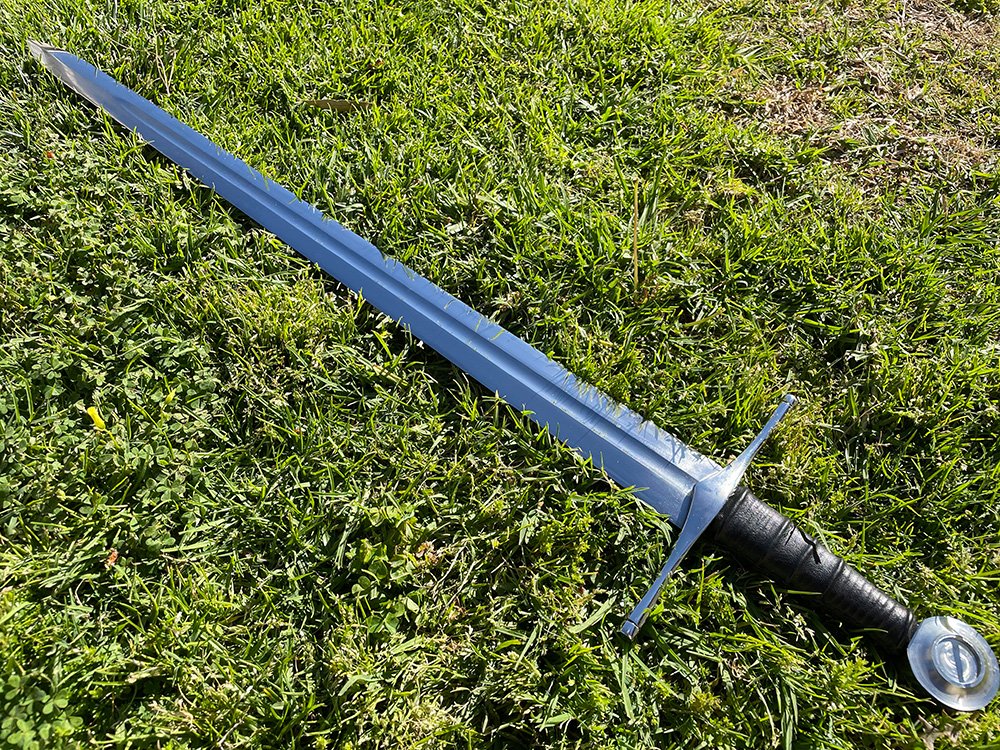
PROS
- Low price
- Ready to cut right out of the box
- Looks great for a budget sword
CONS
- Not as nimble as other production arming swords
- Grip and pommel could use ergonomic improvements
WHERE TO BUY
As noted in the 13th Century Arming Sword review, the sword is available for $249.99 right HERE at the SBG Sword Store. A more ornate, folded blade version is also available HERE for $299.99
I hope the 13th Century Arming Sword Review has been helpful. To return to Affordable Replicas of Medieval Swords from Ryujin 13th Century Arming Sword Review, click here

Buying Swords Online Can Be DANGEROUS!
Find the Best Swords in the:
Popular & Recommended ARTICLES

The ONLY true free online magazine for sword enthusiasts. Delivered once a month on the 1st day of the month, no filler and no BS, just the latest sword news & info delivered straight to your inbox.

